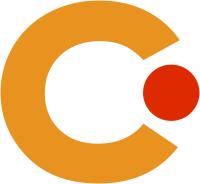Usability of a Mhealth Solution Using Speech Recognition for Point-of-care Diagnostic Management
Journal of Medical Systems, (2023)DOI: 10.1007/s10916-022-01896-y
Аннотация
The administrative burden for physicians in the hospital can affect the quality of patient care. The Service Center Medical Informatics (SMI) of the University Hospital Würzburg developed and implemented the smartphone-based mobile application (MA) ukw.mobile1 that uses speech recognition for the point-of-care ordering of radiological examinations. The aim of this study was to examine the usability of the MA workflow for the point-of-care ordering of radiological examinations. All physicians at the Department of Trauma and Plastic Surgery at the University Hospital Würzburg, Germany, were asked to participate in a survey including the short version of the User Experience Questionnaire (UEQ-S) and the Unified Theory of Acceptance and Use of Technology (UTAUT). For the analysis of the different domains of user experience (overall attractiveness, pragmatic quality and hedonic quality), we used a two-sided dependent sample t-test. For the determinants of the acceptance model, we employed regression analysis. Twenty-one of 30 physicians (mean age 34\,$\pm$\,8 years, 62\% male) completed the questionnaire. Compared to the conventional desktop application (DA) workflow, the new MA workflow showed superior overall attractiveness (mean difference 2.15\,$\pm$\,1.33), pragmatic quality (mean difference 1.90\,$\pm$\,1.16), and hedonic quality (mean difference 2.41\,$\pm$\,1.62; all p\,$<$\,.001). The user acceptance measured by the UTAUT (mean 4.49\,$\pm$\,0.41; min. 1, max. 5) was also high. Performance expectancy (beta\,=\,0.57, p\,=\,.02) and effort expectancy (beta\,=\,0.36, p\,=\,.04) were identified as predictors of acceptance, the full predictive model explained 65.4\% of the variance. Point-of-care mHealth solutions using innovative technology such as speech-recognition seem to address the users' needs and to offer higher usability in comparison to conventional technology. Implementation of user-centered mHealth innovations might therefore help to facilitate physicians' daily work.
